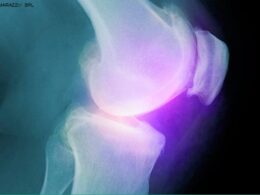This year the call to action is “Use Heart to connect “
The Lancet
Fausto J Pinto; Daniel Piñeiro; Amitava Banerjee; Pablo Perel; Borjana Pervan; Jean-Luc Eiselé
Published:September 28, 2021
While the number of deaths caused by COVID-19 continues to climb towards 5 million, cardiovascular disease (CVD) claims around 18·6 million lives every year.
Cardiovascular disease (CVD) claims around 18·6 million lives every year.
Yet the COVID-19 pandemic has accelerated the uptake of digital health, creating an opportunity to strengthen the response to CVD.
With the increasing access to the internet, and through telemedicine and artificial intelligence (AI)-enabled devices, advances in digital health provide an impetus to improve access and achieve greater equity in health care for the millions of people at risk of or living with CVD, particularly those in lower-resource settings with limited access to in-person treatment.
Although this digital transformation is not a magic bullet, it could help redraw the health-care landscape by improving access to care for underserved populations and by reducing pressures on overloaded health-care systems.
Digital technologies can also empower people by providing them with more control of their wellbeing in sickness and in health.
A trial in the UK of a digital health tool for the management of hypertension is a good example.
The technology facilitates self-monitoring of blood pressure and includes reminders and predetermined drug changes combined with support for behaviour change. The study showed that the tool led to better control of systolic blood pressure after 1 year than usual care.
The increasing application of AI to the electrocardiogram is another example of harnessing AI in the management of CVD.
The potential of remote CVD management has been highlighted in the COVID-19 pandemic when face-to-face medical consultations have not been possible in many settings.
Lessons learned-both positive and negative-from this move to digitally enabled care can facilitate the use of digital health for the prevention and management of CVD worldwide.
Digital health also has a part to play in addressing health inequalities and increasing access to health-care in low-resource settings.
For instance, as digital health expands, governments need to reconsider approaches to investment in medical training and in technology infrastructure and access.
The results of a digital health trial in a community hospital with a limited number of doctors in rural Kenya are an indicator of what could be achieved.
Patients were able to consult doctors and specialists online about their health, including their blood pressure. The study showed that telemedicine was effective in improving control of systolic blood pressure and gave patients access to quality, affordable medication.
There are challenges in relation to awareness, accessibility, and availability of the necessary technology that will need to be overcome on the path to increased use of digital health.
Access to digital technology and network infrastructure in low-income and middle-income countries is insufficient. There are about 3·7 billion people, mostly in lower-income countries, who are offline.
Wherever it takes place, it is crucial that advances in digital health do not exacerbate inequality in health care.
Furthermore, not all technological innovation is necessarily good and it is important to understand what is the problem that needs solving and ensure that the collection of data and evidence is reliable, impactful, and secure.
Much digital health research takes place in selected populations in high-income countries. Thus, AI-derived algorithms are influenced by the gender, ethnicity, age, and socioeconomic status of the sampled population.
If we are to make global recommendations, then we need the same quality of data everywhere, representing all people. The development of digital health affords an opportunity to redress this imbalance and equalise the data framework for CVD and other diseases.
Consideration also needs to be given to the impacts of digital health on the relationship between patient and doctor.
With patients potentially owning much more of their health data, the dialogue with doctors is likely to change.
However, the growth of digital health should never compromise trust between patients and doctors, which is essential for good practices and outcomes.
Digital health solutions are not a panacea and they can only complement a fully funded and staffed health system.
Hand in hand with maintaining trust between practitioners and patients, the journey towards routine use of digital health care has already started. On Sept 29, 2021, the World Heart Federation, its members, and the wider community come together to celebrate World Heart Day.
This year the call to action is “Use Heart to Connect”. Digital health can help connect every heart everywhere and thus bring us one step closer to achieving cardiovascular health for everyone.
References
See original paper
DOI: https://doi.org/10.1016/S0140-6736(21)02144-9
Originally published at https://www.thelancet.com.
PDF version
chrome-extension://efaidnbmnnnibpcajpcglclefindmkaj/viewer.html?pdfurl=https%3A%2F%2Fwww.thelancet.com%2Faction%2FshowPdf%3Fpii%3DS0140-6736%252821%252902144-9&clen=401033












